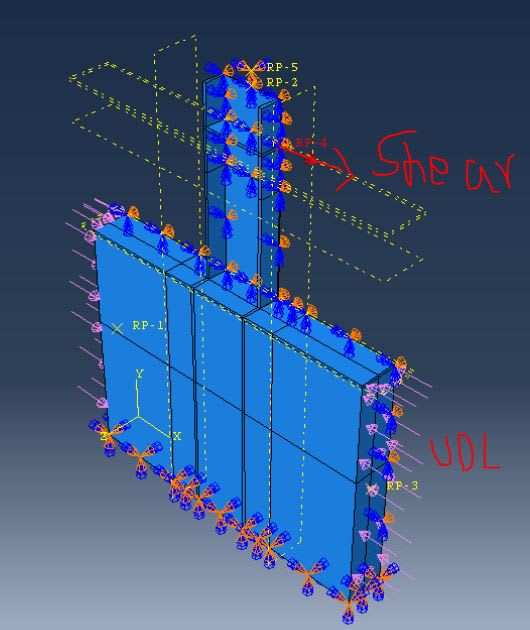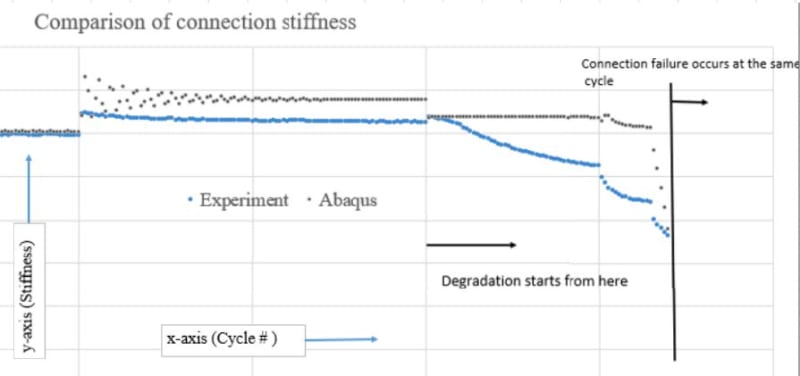Hi everyone!
I am working on ABAQUS model which consists of a reinforced concrete wall and has a cantilevered W-shaped steel beam embedded (see attached picture). In order to make it computationally efficient, I am modeling just half of the full-size specimen. The steel beam is subjected to a cyclic shear loading whereas the wall has its base fixed. I have built the model and am trying to match the output with the experimental results. I am defining a cohesive interaction between steel beam and concrete with following properties:
*Kn=0, Ks=Kt=28
*Normal stress=0, Shear stress along s and t direction=0.42 ksi
*Plastic displacement=0.1 in.
Looks like my ABAQUS model is capturing the failure point well (i.e., connection also failed at the same cycle as seen in experiment) however, the way of connection degradation happening seems to be bit off (refer to attached graph). Connection degradation is starting later in my ABAQUS model as compared to experiment. Can anyone please suggest me what parameters might be contributing to this result?
Thank you in advance.


I am working on ABAQUS model which consists of a reinforced concrete wall and has a cantilevered W-shaped steel beam embedded (see attached picture). In order to make it computationally efficient, I am modeling just half of the full-size specimen. The steel beam is subjected to a cyclic shear loading whereas the wall has its base fixed. I have built the model and am trying to match the output with the experimental results. I am defining a cohesive interaction between steel beam and concrete with following properties:
*Kn=0, Ks=Kt=28
*Normal stress=0, Shear stress along s and t direction=0.42 ksi
*Plastic displacement=0.1 in.
Looks like my ABAQUS model is capturing the failure point well (i.e., connection also failed at the same cycle as seen in experiment) however, the way of connection degradation happening seems to be bit off (refer to attached graph). Connection degradation is starting later in my ABAQUS model as compared to experiment. Can anyone please suggest me what parameters might be contributing to this result?
Thank you in advance.


